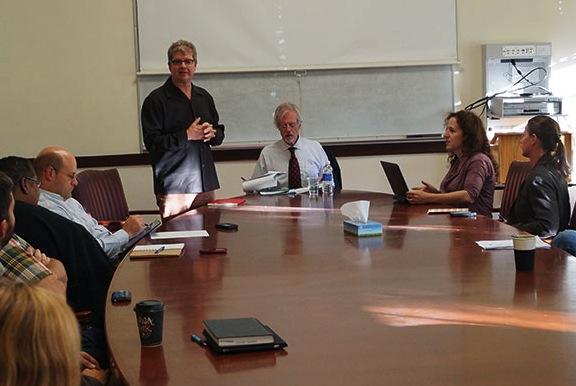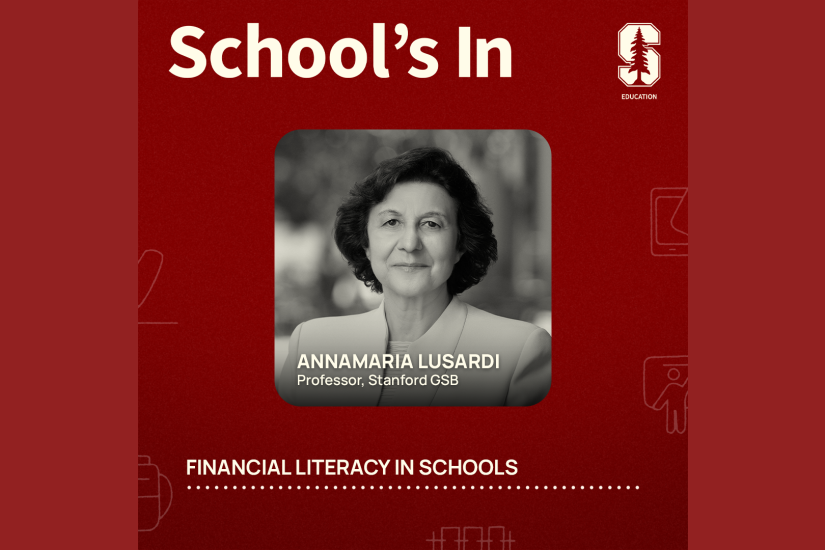
Federal grant to boost high-impact graduate research in education at Stanford center
The Center for Education Policy Analysis at Stanford Graduate School of Education has won a $4 million grant from the Institute of Education Sciences, the research arm of the U.S. Department of Education. The funding will support about 30 doctoral students and promote the latest skills in education policy research with two- and four-year fellowships in a variety of disciplines.
The award advances a new emphasis in federal education research — to encourage closer partnerships between universities and school districts. The goal is to accelerate the translation of research findings into practice. Stanford, which was notified by the institute earlier in May, is one of five universities nationwide to receive such an award.
“School districts and colleges often need rapid answers to practical questions involving school policies, such as how to train teachers and how to direct limited resources,” said Sean Reardon, professor of education and (by courtesy) sociology at Stanford. Meanwhile, he added, researchers have traditionally asked questions that are often of broad, scholarly or policy interest with limited immediate practical application for districts.
“We think there is a sweet spot where these questions overlap,” explained Michelle Reininger, assistant professor of education and CEPA’s executive director. “Our students work to answer these questions using data from school districts or educational organizations that not only offer much-needed practical solutions for schools, but also inform answers to broad, scholarly questions, as well.” Reardon and Reininger are co-directors of the federally funded training program.
The new award follows a five-year grant from the federal institute, made in 2009, that helped CEPA and the GSE to establish the Stanford Interdisciplinary Doctoral Training Program in Quantitative Education Policy Analysis. This next round of funding, again for five years, enables the program to continue its mission of training doctoral candidates to use rigorous quantitative research methods for education policy analysis. And it comes as the GSE is strengthening its partnership with the San Francisco Unified School District, while its faculty continues relationships with dozens of other districts nationwide.
Students in the program will be drawn from the GSE and from social science disciplines across campus, including sociology, political science and psychology. Its focus is to identify potential solutions to the challenges facing educational institutions at all levels from public school districts struggling to close racial achievement gaps, to community colleges redefining their role in higher education.
Already research by doctoral students in the training program, under the direction of GSE faculty, is contributing to policy decisions in some of the nation’s largest urban school districts. Take, for example, the work of three promising researchers:
- Prior to enrolling at the GSE, Rachel Baker taught elementary school in the Marshall Islands, worked as a literacy specialist at a school for the Deaf and coordinated college readiness programming at the Steppingstone Foundation in Boston. Now her research with the Foothill-De Anza Community College District focuses on student course taking patterns and the effects of transfer policies. Her past work showed how individualized student coaching improves the likelihood of college graduation for nontraditional students, as well as how such services compare in cost-effectiveness with other interventions.
- Ken Shores was a teacher for five years in Pueblo Pintado, a small Navajo community in the northwest region of New Mexico, and also taught for two years in Quito, Ecuador, before coming to Stanford. He studies educational inequality and the efficacy of political tools to address this problem. One of his current projects is investigating the effects of court-ordered school finance reform and examining why increased funding alone does not necessarily improve students’ performance and how other measures can move the needle.
- Ilana Umansky has worked with the World Bank, the Organization of American States, Research Triangle Institute and Sesame Workshop and has conducted educational equity and quality research in Nicaragua, Mexico, Colombia, El Salvador and other countries in Latin America. She is currently working on studies with school districts in San Francisco and Salem, Oregon, that shed light on the effectiveness of different programs for English-language learners, particularly immigrant and Latino students.
“These students and others are fulfilling the training program’s mission,” Reardon said. “We developed this program because we wanted to give students a solid background in quantitative educational policy analysis. We provide training in education policy, state-of-the-art statistical methods, and practical skills working with school districts and educational organizations. With that package, they’re going to be able to do the best research possible to inform policy and improve practice.”
The new funding allows Stanford to add features to the program, such as revising the specialized statistics courses now offered and expanding its emphasis on practical partnerships with school districts, colleges, universities and non-profits. Likewise, all students in the program will be required to take a practicum course intended to develop the communication skills needed to build effective research relationships with administrators, teachers, parents and interest groups in public school districts and college systems across the country.
Reininger said that Stanford’s strengths, including the quality of GSE and other departmental faculty in sociology, psychology, political science and business, enable GSE to attract the most talented students interested in education, two factors that were decisive in Stanford’s success in winning the renewal.
“Our efforts to build a diverse array of partnerships with school districts and colleges across the country also proved critical,” she added. “As did the fact that Stanford houses a lot of the historical data that our researchers and partners use in their decision making, giving our program a huge advantage.”
Last month, the GSE announced increased support for faculty doing research projects as part of its partnership with the San Francisco Unified School District. And the research partnership has also created several positions for graduate students on a new Research Action Team, which provides findings in real-time to inform district decision-making.
The total projected costs of the training program are $7.5 million. In addition to the $4 million grant from the Institute of Education Sciences, Stanford will be contributing $3.5 million, or 47 percent of the total, to cost-share fellows’ stipends/tuition and provide program support not covered by federal funding.
Stanford doctoral students who are interested in two-year and four-year fellowships must submit an application by June 2. The program is primarily seeking candidates who will be in the first or second year of their PhD studies in fall 2014, though in some instances it will consider those in their third year.
For more information about the training program, please visit http://cepa.stanford.edu/iesdoctoraltraining.
Andrew Myers is a freelance writer who frequently covers scientific and academic research.



